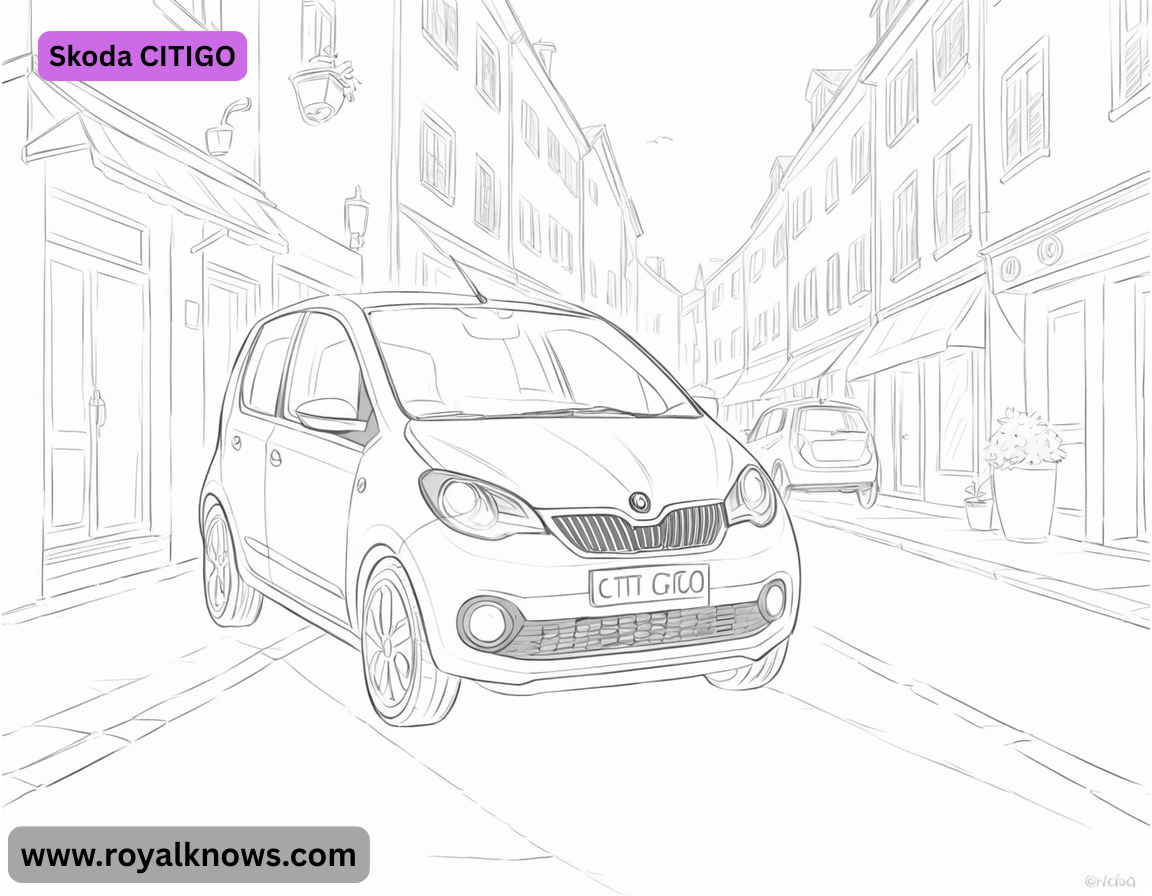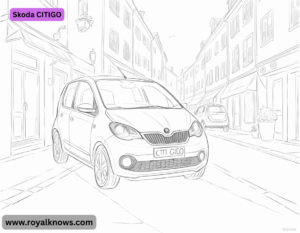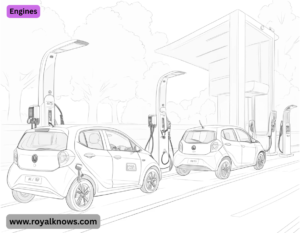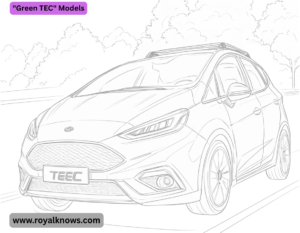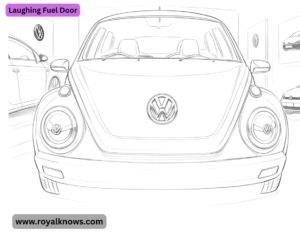Skoda CITIGO It was part of the Volkswagen Group’s lineup of small cars, sharing its platform with the Volkswagen up! and SEAT MII.
Key Features of the Skoda CITIGO:
- Body Style: 3-door or 5-door hatchback.
- Engine Options:
- 1.0L MPI 3-cylinder petrol (60 HP or 75 HP)
- Later, a CNG (Compressed Natural Gas) version was introduced (68 HP).
- A fully electric version, the Skoda CITIGO-e IV, was launched in 2019 with a 36.8 kWh battery and ~260 km (WLTP) range.
- Transmission: 5-speed manual or optional automatic (ASG).
- Dimensions: Very compact (3.56 m long), making it ideal for city driving.
- Fuel Efficiency: Extremely economical, with some versions achieving 4.1 L/100 km (combined).
Facelift (2017 Update):
- Revised front bumper & grille.
- New infotainment options (including touchscreen).
- Updated safety features (optional city emergency braking).
Discontinuation (2020):
- Skoda phased out the CITIGO(alongside the SEAT MII) to focus on electric vehicles like the Skoda Fabia and upcoming EVs.
- The CITIGO-e IV was discontinued in 2020 due to the introduction of the Volkswagen ID.3-based Skoda models.
Legacy:
- Praised for its low running costs, maneuverability, and reliability.
- Popular in Europe as a budget-friendly urban car.
- The electric version was short-lived but marked Skoda ’s first step into EVs.
Performance & Driving Experience
-
- Engines:
1.0 MPI (60 HP & 75 HP) – Peppy for city use but struggles on highways. - 1.0 G-TEC (CNG, 68 HP) – Lower fuel costs but limited refueling stations.
- CITIGO-e IV (Electric, 83 HP, 260 km range) – Smooth & quiet but slow charging (40 kW DC max).
- Engines:
- Handling:
- Not designed for high-speed stability (wind noise over 100 km/h).
- Maintenance Costs:
- Cheap servicing (shared parts with VW up! & SEAT MII).
- No timing belt (chain-driven engine).
- Electric version has fewer moving parts but battery longevity unknown.
3. Interior & Practicality
Pros:
- Surprisingly roomy for front passengers.
- Decent boot (251 liters, expandable to 951 liters).
- Simple but well-built dashboard (higher trims get touchscreen).
Cons:
- Cheap plastics (expected in this segment).
- Rear seats cramped for adults.
- No Android Auto/Apple Car Play in early models.
4. Safety & Reliability
- Euro NCAP Rating (2011): ★★★★ (82% adult, 80% child)
- No advanced driver aids (except optional City Emergency Braking post-2017).
- No ISOFIX in early models (added later).
- Reliability:
- Generally very reliable (Volkswagen Group underpinnings).
- Common issues:
- Weak air conditioning in hot climates.
- Noisy timing chain (in high-mileage examples).
- Rust on older models (check wheel arches).
7. Should You Buy a Skoda CITIGO?
Yes if:
- You need a cheap, efficient city car.
- You prioritize low maintenance costs.
- You can find a well-maintained used example.
No if:
- You frequently drive on highways.
- You need modern tech (adaptive cruise, lane assist).
- You want a long-range EV (CITIGO-e IV is outdated).
Hidden Quirks & Fun Facts
- “Green TEC” Models – Some versions had regenerative braking, start-stop, and low-rolling-resistance tires for extra efficiency.
- No Rev Counter! – Base models had only a fuel gauge & speedometer (upgradeable via VCDS coding).
- “Monte Carlo” Trim? – Unlike the Fabia, the CITIGO never got a true Monte Carlo version, but some dealers added stickers.
2. Tuning & Modifications
- Engine Tuning:
- 1.0 MPI (60/75 HP) → Chip tuning can push 85–90 HP (but gains are minimal).
- Exhaust & Intake – Mostly for sound, no real power boost.
- CNG Tuning – Possible but risky (not many specialists).
- Suspension & Handling:
- Lowering springs (EIBACH/H&R) improve looks but reduce comfort.
- Wheel Upgrades – Max recommended size: 16″ (stock is 14″–15″).
- Styling Mods:
- OEM+ Look – VW up! GTI-style bumpers, rear spoiler.
- Interior Upgrades – Polo/Golf seats fit with modifications.
- Electric Swap Potential?
- No direct kits, but the CITIGO -e IV battery could theoretically fit in a petrol model (expensive!).
4. Detailed Buying Guide (Used CITIGO )
What to Check Before Buying:
- Timing Chain – Listen for rattling at startup (replacement: ~€500).
- Rust – Wheel arches, sills, and door edges (common in salty climates).
- Gearbox – 5-speed manual is bulletproof; ASG (auto) can be jerky.
- Electrics – Early models had weak window regulators.
- AC Performance – Weak cooling in hot weather (check compressor).
Best Model Year to Buy:
- 2017–2020 – Updated interior, better safety, fewer rust issues.
- Avoid 2011–2013 – Early models lack ISOFIX and have weaker AC.
- Mileage Sweet Spot:
- Petrol: 50,000–100,000 km (well-maintained examples last 200,000+ km).
- EV (CITIGO -e IV): Battery health matters more than mileage (check degradation).
6. The Future of the CITIGO
- No direct successor – Skoda is focusing on the EIROQ (electric SUV) instead.
- Classic Potential? – Early petrol models might become “future classics” due to simplicity.
- EV Conversion Trend? – Some enthusiasts are swapping in e-up! parts.
Final Verdict: Is the CITIGO a Future Classic?
Yes, if:
- You find a low-mileage, well-kept example.
- You want a cheap, reliable city car with character.
- You’re into quirky, small cars (like the original VW LUPO).
No, if:
- You need modern tech or highway comfort.
- You want strong resale value (EVs are a gamble).
Best for:
- City commuters – Perfect for tight parking & low costs.
- First-car buyers – Cheap to insure & run.
- Tinkerers – Easy to modify & repair.
Factory Secrets & Easter Eggs
- “Laughing Fuel Door”: Open the fuel cap on pre-2017 models to find a embossed in the metal (a nod to VW Group’s playful design).
- Hidden Snow Mode: Models with ASG automatic transmission can activate a pseudo-“snow mode” by pressing the brake + throttle simultaneously during startup (dealer-only trick).
- Volkswagen up! XTE Parts Compatibility: The ultra-rare VW up! 4-cylinder 1.0 TSI (90 HP) engine almost fits the CITIGO bay – but requires custom mounts and ECU hacking.
2. Rally & Motorsport Legacy
- CITIGO Rally Cup: A one-make series in Czechia (2013–2015) used stripped-down 1.0 MPI CITIGO with roll cages, rally suspension, and 98 HP (via unlocked ECU).
- Rally Mods Checklist:
- Sequential gearbox (SADEV ST-75 fits with tunnel modifications).
- Rear axle delete (converted to RWD using Polo parts).
- Lightweight plexiglass windows (saves 42 kg).
3. Hyper-MILING: Pushing Fuel Economy to the Limit
World Record Attempt: A modified CITIGO 1.0 MPI achieved 2.9 L/100 km (81 mpg) by:
- 0W-8 racing oil (reduces engine drag).
- Grille block-off plates (improves aerodynamics).
- Coasting in neutral downhill (disables fuel injection).
- CNG (G-TEC) Hacks: Pre-heating CNG with exhaust warmth boosts range by 6% in winter.
4. The CITIGO -e IV as a Budget Battery Donor
- DIY Powerwall Potential: The 36.8 kWh battery (14 modules) can be repurposed for:
- Solar home storage (~€4,000 value if harvested).
- Electric bike conversions (1 module = 48V 20Ah).
- Battery Health Check: Use OB DELEVEN to read “Actual kWh Capacity” – below 30 kWh = degraded.
5. The “CITIGO RS” That Never Was
Skoda prototyped a 1.4 TSI (150 HP) hot hatch version in 2012 (codenamed “Project Spark”), but it was axed due to:
- Crash test failures (short hood couldn’t absorb impact).
- VW Group politics (would’ve cannibalized VW up! GTI sales).
- Spy Photo: A single black prototype exists in Skoda ’s museum warehouse.
Get article on pdf file….Click now
……Skoda CITIGO…..
